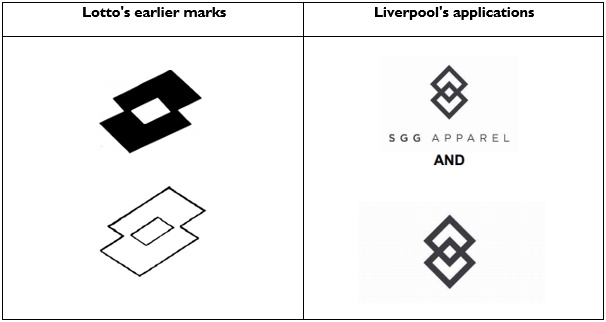News from in & around
The Clubhouse
When less is not always more: Issues registering and enforcing simple logos
Recently, companies have been reverting to more simplistic brand identities. In May 2019, BT announced the launch of a new brand identity featuring the letters BT in a circle logo (having filed a UK trade mark application in black and white for the logo back in 2016). Warner Bros. Records has re-branded to Warner Records and unveiled a new black and white logo to replace its shield logo. Fashion houses such as Burberry and Diane Von Furstenberg have also adopted the less is more approach, and rebranded to chunky bold fonts over their previous more stylised fonts.
When adopting a more simplistic logo, however, it is important to bear in mind issues of registrability and enforcement that may be more problematic for such logos. In particular, the simpler a logo is, the greater the risk is of it not having the requisite distinctive character, or of it coming up against third party rights. Some recent cases concerning EU and UK marks demonstrate these issues.
Adidas three stripes mark
In June 2019, the EU General Court issued its decision in Adidas AG & Marques (Intervener) v EUIPO concerning Adidas’ figurative mark for “clothing, footwear, headgear”, the description for which is: “The mark consists of three parallel equidistant stripes of equal width applied to the product in whichever direction.” Partner Sally Britton discussed the decision of the General Court on the BBC News Channel.

The decision is part of a long-running dispute between Adidas and Belgian company Shoe Branding Europe BVBA, which owns the Patrick sportswear brand (featuring a two stripe logo). In 2014, Shoe Branding filed an application for a declaration of invalidity of Adidas’ mark on the basis that it was devoid of any distinctive character.
Adidas argued that the mark had acquired distinctive character through use but, despite producing almost 12,000 pages of evidence relating to its use, the General Court agreed with the EUIPO that Adidas had not identified sufficient evidence of use of the mark as registered. Adidas also tried to argue that the mark should be considered as a pattern mark, rather than a figurative mark. The General Court disagreed with Adidas and noted that the EUIPO can only consider what is set out in the application for registration and corresponding description.
In relation to acquired distinctiveness, much of Adidas’ evidence showed use of signs which, the Board of Appeal had concluded, differed from the mark significantly, for example, where the colour scheme was reversed (i.e. white stripes on a black background) and use of sloping signs. These uses altered the distinctive character of the mark as registered. In particular, the General Court took into account the “extreme simplicity” of Adidas’ mark, stating that, “the simpler the mark, the less likely it is to have a distinctive character and the more likely it is for an alteration to that mark to affect one of its essential characteristics and the perception of that mark by the relevant public“.
Further, Adidas had to show use of the mark throughout the EU to demonstrate acquired distinctiveness. Whilst it had produced 23 market surveys in a number of EU member states, only five of those were relevant, with the other 18 being carried out in relation to signs that were not broadly equivalent to the mark as registered. Whilst the CJEU confirmed in the KitKat case (discussed in our July 2018 edition), that it would be unreasonable to require separate evidence of acquired distinctiveness in each Member State, here the results of the five surveys that were on point could not be extrapolated to all Member States.
The case also bears some parallels with McDonald’s’ failure earlier this year to prove genuine use of its BIG MAC trade mark, where again the issue centred on the quality of the evidence. It is likely that Adidas will appeal to the Court of Justice, and it does of course have a number of other three stripe EUTM registrations. However, it is crucial that businesses use trade marks in the same form as they are registered or are intended to be registered, to increase the chances of being able to prove evidence of acquired distinctiveness.
Simple shapes
Simple shapes may also be more likely to come up against conflict with third party rights, as demonstrated by two recent UKIPO cases, with the outcome depending upon the visual and conceptual comparison between the relevant marks. In the first case (concerning Samsoe & Samsoe Holding A/S and Jolley Good Ltd), Jolley, a sports apparel company, had applied to register the logo pictured below as a UK trade mark for various clothing related goods. Samsoe, a Danish clothing company, opposed on the basis of identity and confusing similarity with its earlier EU trade mark, which covered amongst other things, clothing related goods.

Jolley argued that its application represented the centre circle of a football pitch, which was consistent with its existing brand (Next Goal Wins) for which it also owns a UK trade mark.

However, the Hearing Officer was not convinced by the argument that Jolley’s mark would be viewed as a football pitch and instead concluded that both marks would be seen as “a combination of two ordinary geometric elements; a circle and a line.” As the marks were found to be visually similar to a high degree, Samsoe’s opposition was successful.
In contrast, in an opposition brought by sportswear company Lotto Sport Italia S.p.A. against the below trade mark applications filed by The Liverpool Football Club and Athletic Grounds Limited on the basis of its earlier rights, the UKIPO rejected the opposition.
Both the applications and earlier rights covered a number of goods ranging from cosmetics to clothing. Lotto opposed the applications based on a likelihood of confusion and reputation relying upon its earlier UK and EU rights for its “double field device”.

In assessing the conflicting marks, the visual comparison was of particular importance because of the nature of the goods, i.e., clothing, personal products, bags etc. Further, as the marks consisted of relatively simple line drawings, minor differences would be sufficient to distinguish between them.
The Hearing Officer concluded that the marks were “considerably different” stating that Liverpool’s mark “is an interlocking diamond device, whereas the opponent’s mark is rectangular“. He also found the Opponent’s evidence of its reputation for its double field device to be lacking and so the opposition failed.
If you would like to hear from experts on this and other brand subjects, join us on 2 October for our Brand Protection Masterclass.


